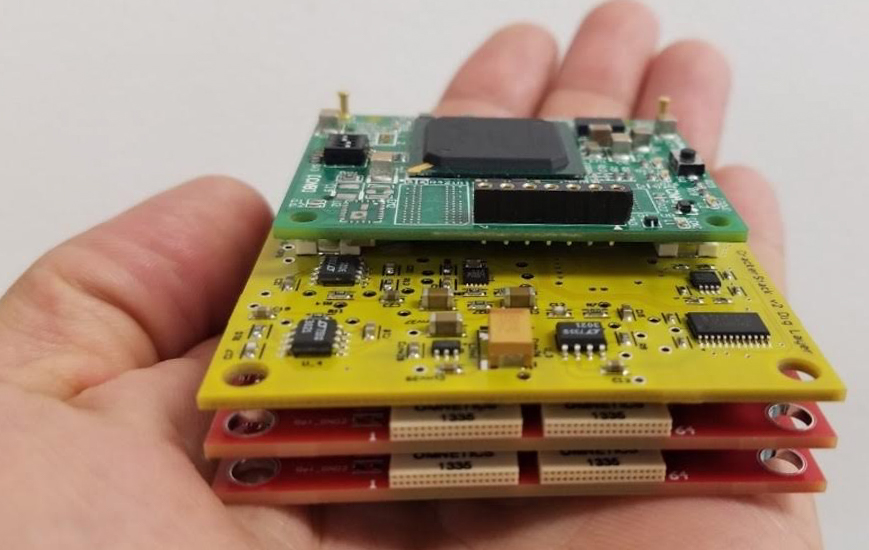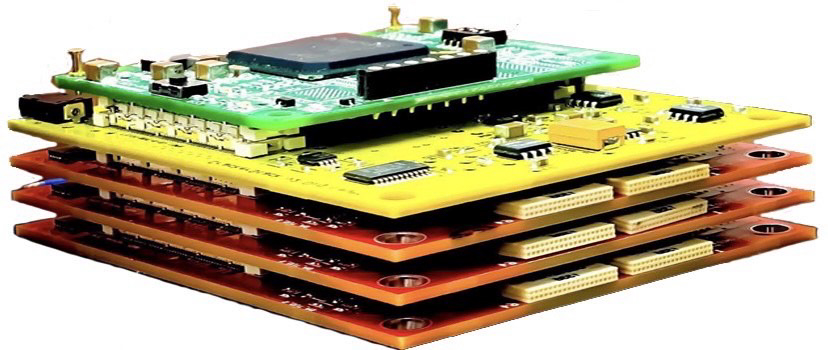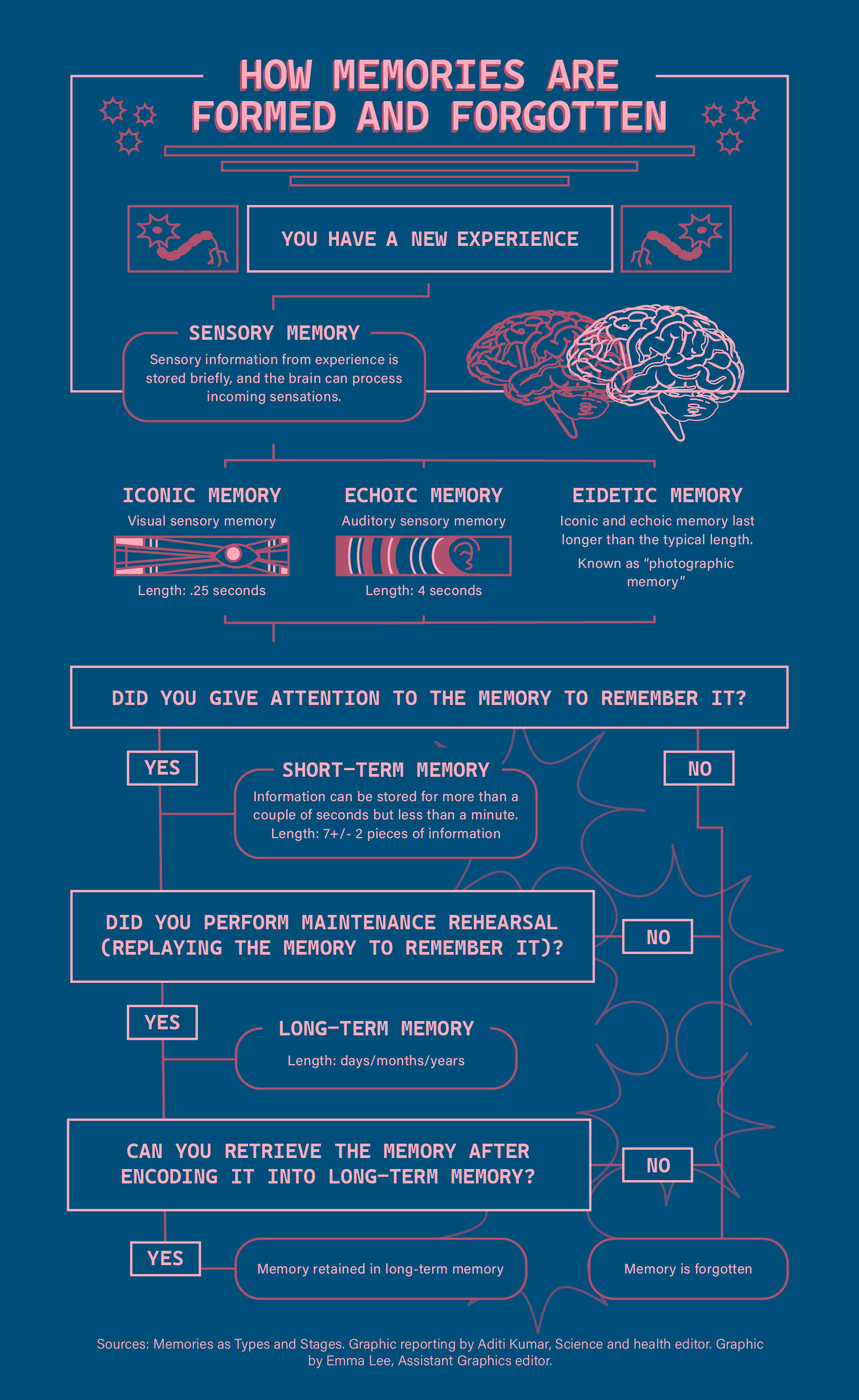Neuro-stack device technology shows promise for future of brain research

The Neuro-stack sits in a person’s hand. UCLA researchers have created a device that can record single-neuron activity during movement for research purposes. (Courtesy of Dejan Markovic)

By Leila Okahata
April 3, 2023 5:56 p.m.
This post was updated April 4 at 10:58 p.m.
UCLA researchers have developed the first wearable device to record the activity of individual neurons in a person’s brain while they move freely.
According to a study published Feb. 20, the researchers created a handheld-sized device called the Neuro-stack that can record and stimulate single-neuron activity in humans for research purposes. Current technologies that record single-neuron activity are bulky, costly and require a person to be wired down and immobile, said Nanthia Suthana, a senior author of the study and associate professor of psychiatry and biobehavioral science in the David Geffen School of Medicine. However, natural human behaviors often involve full-body movements, so devices that keep individuals stationary do not always accurately represent the human experience, she said.
“People, they move. They make facial expressions. They’re making gestures. They’re moving. They’re walking. They’re laughing. They’re emotionally, naturally fluctuating,” she said. “So when you record brain activity or you develop new therapies in this very constrained setting, you’re not entirely sure it’s going to work in the real setting.”
The Neuro-stack is made of a stack of electronic chips that connect to a person’s head via cables and implanted electrodes, said Dejan Markovic, a senior author of the study and professor of electrical and computer engineering. The Neuro-stack is conveniently packed inside a backpack to allow the person the flexibility to move around, he said. As the Neuro-stack can both record and stimulate neuronal activity, it can serve as a diagnostic tool and a therapeutic intervention to help treat brain disorders, he added.

It also has the ability to adapt to a person’s condition to create more personalized treatments, Markovic said, adding that it is akin to how the Netflix algorithm generates individualized movie recommendations.
“Every person puts preferences and has some patterns, and then the algorithm … (creates) personalized recommendations,” he said. “So something similar like that, in terms of the data analytics, for us to understand how to give people, in addition to chemical pills, … an electronic pill. What’s your electronic medication that you can take?”
The use of the Neuro-stack, however, is currently limited to people with electrodes already implanted in their brain, Suthana said. There are too many risks associated with having a healthy individual undergo the surgery purely for research purposes, and no method currently exists for recording single neuron activity noninvasively, she said. But epileptic patients, for example, may already have implanted electrodes that modulate their brain activity, so the Neuro-stack can connect to them to record and stimulate the electrical activity of their neurons, she said.
Although the results from this study could be confounded by epileptic activity or seizures, the researchers tried to minimize the impact of those factors by looking at the brain under different behavioral conditions and studying electrodes in healthy brain tissues, Suthana said.
“This is the only way you can do this kind of research, but it’s still extremely valuable because it’s really the only window into the human brain at the single-cell level,” she said.
Dr. Ausaf Bari, a co-author of the study and an associate professor of neurosurgery, said patients studied with the Neuro-stack reported increased flexibility in movement with the device. He added that they felt they could interact with their environment naturally without being tethered down to large machines.
“It was very liberating for these patients,” he said. “And ultimately, I think that’s the most important thing: What’s the patient experience?”
The Neuro-stack, however, is currently used only for research purposes, said Uros Topalovic, lead author of the study and postdoctoral student in psychiatry. For it to be considered a medical device that can be used to treat brain disorders, the Neuro-stack must be fully implanted in the brain, cannot hinder daily function and should reduce the symptoms of a patient’s clinical condition, he said.
Before the Neuro-stack was created, studying single-neuron activity in freely moving organisms could only be done in animal models, Topalovic said. This new technology can bridge the gaps in knowledge between research done with animals and humans, he added.
Brain-computer interfaces such as the Neuro-stack will allow us to better understand how the brain works and how to treat it, Bari said. Neuromodulation, or using technology to stimulate neurons and change behavior, is becoming increasingly significant in treating brain injuries, he added. However, he said he feels that what defines humanity is the nature of our brains, and anything that alters it can also change the future.
“We will be confronted as a society with the difficult questions of enhancement of function in normal individuals using neuromodulation,” he said. “And it’s going to change what it means to be a human.”




